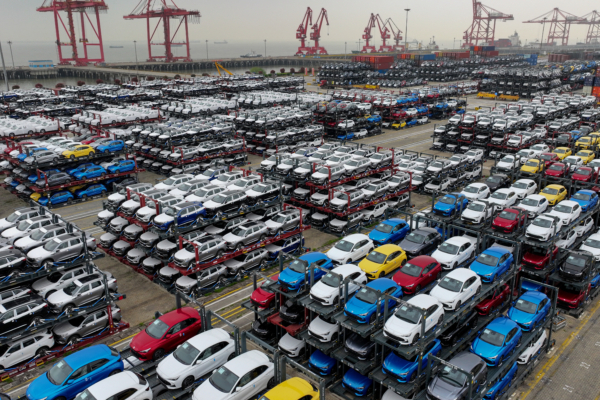The European Commission on Tuesday (August 20) released the “Draft Definitive Findings of Anti-Subsidy Investigation into Imports of Battery Electric Vehicles from China,” which adjusted some tax rates and proposed imposing a maximum anti-subsidy tariff of 36.3% on electric vehicles manufactured in China. The Communist government of China has threatened to take retaliatory trade measures against the European Union.
The European Commission stated that it has disclosed the final decision draft on imposing anti-subsidy taxes on electric vehicles imported from China to relevant parties and made the following adjustments to the proposed tax rates:
– BYD: 17.0%;
– Geely Auto: 19.3%;
– SAIC Group: 36.3%;
– All other companies producing electric vehicles that cooperated with the investigation: 21.3%;
– All other companies producing electric vehicles that did not cooperate with the investigation: 36.3%;
– Tesla as an exporter from China: 9%.
These anti-subsidy tariffs are in addition to the standard 10% tariff imposed by the EU on car imports.
According to Reuters’ report on Tuesday, the European Commission stated that the proposed tariffs are necessary for fair competition and to counter unfair subsidies.
The European Commission set a new tax rate of 9% for Tesla, lower than the 20.8% in July. The Commission stated on Tuesday that, compared to the Chinese electric vehicle manufacturers investigated, Tesla receives fewer subsidies from the Communist government.
The proposed maximum tariff of 36.3% in this draft is slightly lower than the temporary rate of 37.6% set in July. The EU Commission stated that it still believes Chinese electric vehicle manufacturers benefit from extensive subsidies from the Communist government.
The European Commission also mentioned that interested parties could provide comments on the investigation results by August 30.
The final proposed tax rates will be decided by a vote of the 27 EU countries. Unless opposed by a specific majority of the 27 EU member states (representing 15 EU member states with 65% of the EU population), the Commission’s proposal will be implemented. The final results are expected to be published in the Official Journal of the European Union by October 30 at the latest.
Sources indicated that in the consultation vote in July, 12 EU members supported the temporary tariffs, 4 voted against, and 11 abstained. They believe that this draft may become the final decision for the EU’s taxation of Chinese electric vehicles.
Before that, the EU and Beijing could still reach a compromise to avoid or reduce the proposed tariffs. Meanwhile, China has filed a complaint with the World Trade Organization.
Since October 2023, the EU has been conducting an “anti-subsidy investigation” on Chinese electric vehicles. Analysts generally believe that the EU’s “anti-subsidy investigation” on Chinese electric vehicles is related to Chinese EV manufacturers relying on subsidies from the Communist government to seize the EU market at low prices.
The European Commission estimates that Chinese electric vehicles’ market share in the EU increased from 0.4% in 2019 to 8% in 2023, expected to reach 11% this year, and possibly 15% by 2025. Additionally, Chinese electric vehicles are generally priced 20% lower than those manufactured in the EU.

